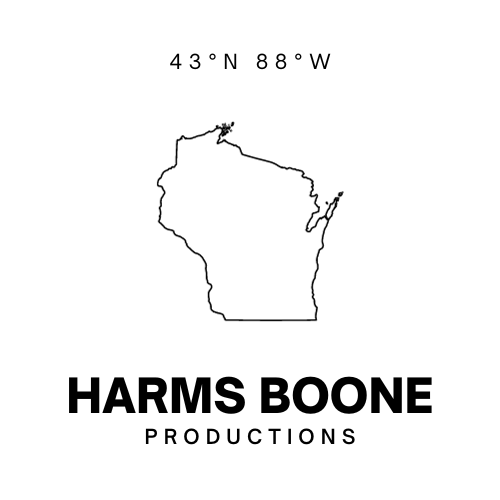
Sonic Highways is the title of the latest release from the Foo Fighters. A short (their shortest ever?) album clocking in a just 8 tracks, one for each of the episodes in the HBO series of the same name. It is also the follow on album to Wasting Light, the band’s 2011 release and Reel to Reel Dave Grohl’s solo album recorded with various other musicians produced during the recording of Sound City, a documentary he wrote about the eponymous Los Angeles recording studio where nearly every musician worth knowing recorded an album. That documentary was a phenomenal tribute to American music and a particular kind of recording technique that is seldom, if the documentary is to be believed, used by musicians in the age of Pro Tools and home studios. Even if fans were unaware of the documentary, Sonic Highways is a Foo Fighters album that holds up every expectation we should have but taken with the HBO series it stands as a loving tribute to more than sixty years of Americans making music spanning Go-Go, Country, Rock and Roll, Hip Hop, Jazz or Punk (which features most prominently across the series).
At eight tracks the album is a quick listen. Double records used to be somewhat rare (and much more expensive than a single LP) but they seem commonplace these days. Like it’s the default; as if you’re band is doing it wrong if they make an album that fits into a 44 mintue run. Maybe there’s nothing wrong with that. Some would argue the concept of an album is making a quiet exit in a world where electronic media put fewer physical constraints on a person’s library. Sonic Highways is not here to make wistful arguments about the qualitative difference between digital and analog music. There is something, though, about the focus and concision required to produce an album that fits on two sides of pressed vinyl. The songs on Sonic Highways flow one right into the next, gracefully progressing from a gritty, heavy opening through an almost anthemic midesection before falling into a somber finale that leaves the listener feeling as if something bigger, grander is on the horizon.
Those transition points are easily identifiable on a second listen (“What Did I Do?/God As My Witness,” Austin and “Subterranean,” Seattle), but seemed to pass right by me the first time round. Perhaps that is why, taken track by track, the album is hard to pin down. Though I don’t listen to radio stations other than The Current to know which songs are getting mainstream airplay, I imagine the first song released was “Something from Nothing,” the first track and the one recorded at the end of the HBO show’s first episode about Chicago. And as a lead single, it’s a good song and one that will probably get people to give the album a shot. But as an expression of the album, it’s maybe misleading—if a listener heard that song on DC 101 and thought the rest of the album would be a dark, punchy album they might be disappointed. Especially when contrasted with later tracks like “In the Clear,” (New Orleans) or “Outside” (Los Angeles) the first two tracks make the album and the band stand out more for their incredible range of talent.
Watching the show and listening to the album one week at a time made the method behind this album seem like an exhaustingly stressful way to write music. Grohl came into each city with music but no lyrics. The band unloaded, unpacked, and spun up a single-song session every time they came into town and tore it all down immediately after they left. There are a few exceptions like in Austin, TX where they recorded at least one other song for Austin City Limits’ 40th Anniversary special (go watch that now, I’ll wait). The show makes it look like they did all of that plus film a documentary simultaneously and in about a week’s time. There was also a surprise performance of some kind most episodes: 9:30 Club (DC), The Bluebird (Nashville), Preservation Hall (NOLA). The show is a rare glimpse into not only how an album is made (we’ve seen that before), but also how music is made, and where an ensemble like the Foos turn inspiration into creativity.
Compared with other rock albums this year, espeically Jack White’s Lazaretto, it feels like a work of rock and roll refreshingly gimmick-free.[1] It is internally consistent and demonstrates Dave Grohl and the Foos are masters of a particular and distinctly American form of music. Sure, the HBO series is kind of a gimmick, and maybe recording in eight different studios each in different cities is too. But the amazing thing about owning and listening to this album, is that you are completely unaware of that unless you’re prepared to geek out on the liner notes. HBO’s logo is nowhere on the album. It isn’t stuffed with pleas for you to join HBOGo. The Foos don’t do that kind of shameless promotion even though they definitely could.[2] Instead, the liner notes remind me of some of my favorite records out of my Dad’s old collection: photos of the band clowning around in the studio, looking serious at the board, crouching over a drum kit, clad in headphones. Other than “Greetings from X” postcard graphics on the reverse of the lyric sheet, there’s no indication of the pan-American recording other than the “Recorded in” line in the credits.
Notes:
- I loved Lazaretto but seriously, the split-track, reverse-grooved, hologram-enabled LP was a bit much. We get it! Vinyl can do more than play music, MP3s can’t! Read you loud and clear, bro. It’s also increasingly clear Jack White is amazingly talented but when it comes down to it his ego gets in the way of the art.
- The show and the album have entirely different logos and branding.
